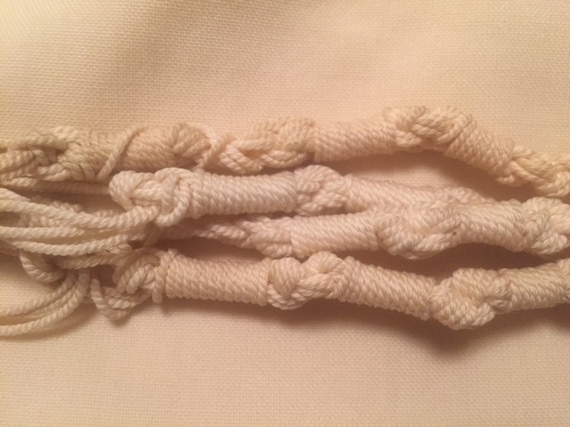This one is really inside baseball, somewhat obscure - but, if you bear with me, I can promise an intimate look at the delights and dangers of Talmudic study, and also at the men-from-the-boys camaraderie (I use the gendered idiom advisedly) that can develop around Talmudic learning, with certain hazards.
The Talmudic text of which I am thinking comes to mind a propos the Hebrew name of this week's Torah-reading, "Shmini" - meaning, literally, "The Eighth," with reference to the conclusion of Aaron's sons' priestly initiation in the desert tabernacle of the biblical story, on the eighth day of the rite.
And explaining the connection requires some of my own story.
For nearly two decades, I taught a course in most academic years on gender in Judaism, principally to rabbinical students - of all genders, not trivially. And one of the most illustrative and the most troubling texts I ever placed upon the table for examination was a three-pages-long disquisition in the Babylonian Talmud's tractate Menachot.
The Babylonian Talmud is the magnum opus of early Jewish tradition, weaving several centuries of law and anecdote in highly stylized tapestries of argument, built on a matrix of the very oldest precepts in rabbinic religion. The Talmud brings the multiple views of many generations into dramatic dialogue with one another, by way of intricately constructed deliberations that combine the energy of stage-plays with the rigors of cerebral calisthenics. Menachot is a volume nominally on the subject of grain-offerings - but, characteristically, the part we will peek at has ranged quite far from that theme.
The segment begins (on p. 43b in the standard Vilnius edition) with a very early but somewhat extra-canonical rabbinic teaching, saying: "All are obligated in the commandment of the fringes [the tassels worn, by biblical precept, on the corners of one's garment] - Priests, Levites, and Israelites in general, converts, women, and bondmen..."
And the discourse concludes, three dense columns of text later, with a story about a famed and wily prostitute who nearly causes a young man to forsake pious life among the sages - by which point the intervening arguments have decidedly excluded women from the obligation of the fringes, an exemption that was only an individual, minority view, against consensus, in the teaching at the outset.
At the same time, the same intervening teachings also have built the commandment of the fringes into the very paradigm of Jewish enfranchisement and identity.
For example -
"This commandment is as weighty as all the commandments together."
"A person who is obligated by this command is obligated in all the commandments of the Torah."
"One who is assiduous in fulfilling this commandment merits receiving the countenance of the Divine Presence."
And, lest you suspect that I am somehow reading gender into the Talmud's exposition in Menachot, rather than discovering it right there, consider the following, verbatim:
"Cherished are Israel, in that the Holy One, Blessed be He, surrounds them with commandments: phylacteries upon their heads, phylacteries upon their arms, fringes upon their garments, and the mezuzah upon their doorposts - and of these, King David the Psalmist sang to the Divine, 'Seven times a day I praise You, for the precepts of Your righteousness' (Psalm 119:164) [the two phylacteries, plus the four fringes, plus the sacred inscription on the doorframe tallying to a total of seven embracing commands]. When David entered the bathhouse [where traditionally no mezuzah is affixed], he became dismayed, saying, 'Is it possible that I will stand here naked without commandments?' However, when he remembered the circumcision in his flesh he was heartened, and, when he emerged, he sang of it a Psalm: 'For the choirmaster, upon the eighth [i.e. the eighth string of the lyre], a song of David' (Psalm 12:1), alluding to the circumcision, which is performed upon the eighth [i.e. on the eighth day of the male infant's life]."
One year, one of the seminarians in one of my classes was named Richard, and went by a common abbreviation of that name - and his moniker forever after in that semester became "Shmini" ("Eighth"). Figure it out.
Yes, the Talmud is talking about King David's... well, ahem, his Richard - and by extension (or, more graphically, the opposite) is saying that the ideal Israelite cannot be deprived of sacred signs, because the covenant is inscribed in his very flesh - emphasis, of course, on 'his'.
If it seems as though the holy discourse of the ancient Rabbis - and by extension mine - has veered abruptly, and in questionable taste, toward the frat-house, or the Roman bathhouse, there is something accurate in that, having to do with the masculine culture of the ancient study-house. The path is all too inexorable, from the inclusion of women in the commandment of the fringes in the ancient teaching at the outset, all the way across the sea - as the concluding story of the segment goes - to the island doorstep of a vividly imagined Most-Tempting-Whore-of-Her-Day, where, predictably, our hero almost loses his anchoring and is saved by the tasseled mooring-lines of his fringed garment.
The route is a rut carved by all-male fellowship in sacred learning, privileging masculinity in thinking about closeness to Divinity and mostly missing the kind of intellectual encounter with representatives of another gender - the fringe, so to speak, that is half of humankind - which might challenge the tendency.
One may throw up one's hands in frustration at a text that so overtly arrogates all the most emblematic tokens of belonging to a male domain. But I suggest, instead, that our Talmudic segment from Menachot can be quite empowering for women and fellow-travelers who are inclined to find and forge a more egalitarian way.
How on earth so?
The fact that such clear prejudices toward the male are so thoroughly and clearly intertwined in our Talmudic text with decisions favoring male-centered practice suggests that if we bring different assumptions to our sacred thinking - and different company as well - we may arrive, with equal conviction, and with an equal sense of sacred imperative, at quite different conclusions.
The Covenant of the Eighth and the Fringe
This one is really inside baseball, somewhat obscure - but, if you bear with me, I can promise an intimate look at the delights and dangers of Talmudic study, and also at the men-from-the-boys camaraderie (I use th
This post was published on the now-closed HuffPost Contributor platform. Contributors control their own work and posted freely to our site. If you need to flag this entry as abusive, send us an email.

